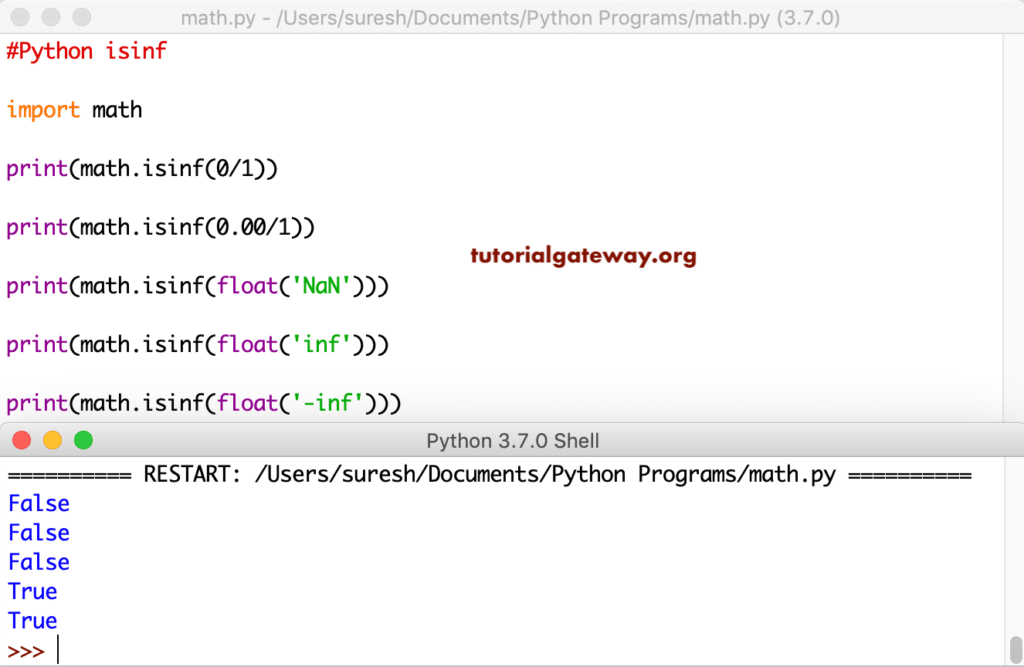The Python isinf function checks whether the given value is an infinite number or not. If it is an infinite number, then the Python math.isinf returns True otherwise, False, and the syntax of it is
math.isinf(value)
Python isinf example
In this example, we are using the isinf function on both positive and negative numeric and decimal values. We have also used Python math.pi inside this function.
import math print(math.isinf(10)) print(math.isinf(0.00)) print(math.isinf(-200)) print(math.isinf(-4.0002)) print(math.isinf(math.pi))
False
False
False
False
FalseIn this Mathematical function, we are passing the infinity, NaN(not a number) values as the function arguments.
import math
print(math.isinf(0/1))
print(math.isinf(0.00/1))
print(math.isinf(float('NaN')))
print(math.isinf(float('inf')))
print(math.isinf(float('-inf')))

